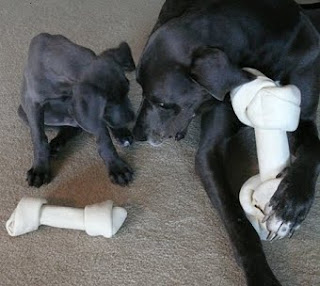
If your dog is an outside dog, then it's important to make sure your furry friend stays warms during the cold winter months. Some months, especially the months of January and February, can drop to below zero temperatures, depending on where you live. Here are a few tips to make sure your pet stays toasty this winter.
Most puppies cannot survive the cold like adult dogs, so be sure to keep your puppy indoors during winter. It's best to only take them outside for housebreaking purposes only.
Your dog will need more food, especially protein, during the winter months. This will help to keep your pet's fur in good shape and provide the extra calories it needs to survive the cold. Also, make sure your dog has plenty of room to exert the energy it needs to keep its body temperature a level that will provide enough body heat to keep it warm.
If you live in an area that snows, be sure to make your pet a place to sleep that isn't on the snow. Hay, cedar or pine chips, and other pet bedding is perfect for this. If you have a shed or outside building your dog can sleep in, a heated bed is also a perfect way to make sure your dog doesn't freeze. We have a great selection of heated beds and pet bed warmers that will ensure your pet stays warm.
It is also crucial to make sure your pet has plenty of drinking water too. Unfortunately, the cold can cause your pet's water to freeze so it's important to have water that is liquid for your pet to drink. If you live in an area that gets to below freezing temperatures, then you might want to consider getting a heated dog bowl for your pet. This will help your dog's water stay liquid and won't freeze even in the lowest temperatures.
When all else fails, if you can always bring your pet indoors if you think it is too cold for him. Most pets with thick coats will be fine outside, as long as you follow these tips.
